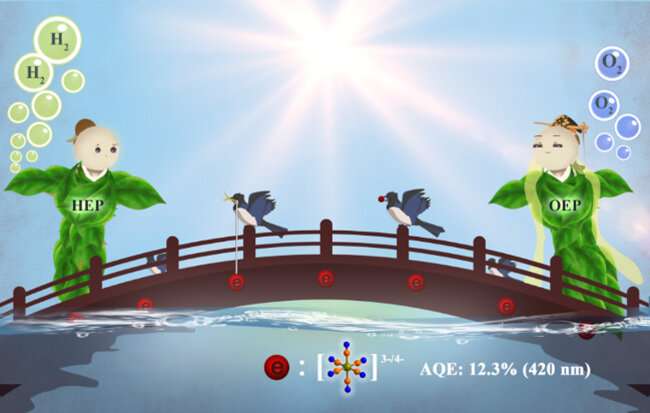
Photocatalytic overall water splitting (OWS) to produce hydrogen is one of the most promising technologies to solve energy and environmental problems and realize effective conversion and storage of solar energy.
However, due to the lack of efficient cocatalysts and limited understanding of the underlying mechanism, visible-light-driven photocatalytic OWS systems show relatively low efficiency with respect to the UV-light-responsive ones.
Recently, a research group led by Prof. Li Can, Prof. Zhang Fuxiang and Dr. Qi Yu from the Dalian Institute of Chemical Physics (DICP) of the Chinese Academy of Sciences (CAS) has developed a highly efficient Z-scheme OWS system. The system enables benchmarked apparent quantum efficiency (AQE) and solar-to-hydrogen (STH) energy conversion efficiency over particulate inorganic semiconductor photocatalysts driven by visible light.
This study was published in Nature Communications on Jan. 25.
The researchers designed and developed Ir as reduction cocatalyst and FeCoOx composite as water oxidation cocatalyst, respectively.
Benefiting from the selective deposition of the above dual cocatalysts, photogenerated charge separation and water oxidation activity on BiVO4 were achieved. The researchers assembled an efficient visible-light-driven photocatalytic OWS system with AQE of 12.3 percent (420 ± 10 nm excitation) through coupling with the hydrogen evolving photocatalyst.
In addition, they analyzed the microstructure of FeCoOx and its mechanism of promoting charge separation and water oxidation performance.
"These results may encourage and inspire the design and assembly of OWS systems for more efficient solar-to-chemical energy conversion," said Prof. Zhang.
Provided by Chinese Academy of Sciences.

 Previous page
Previous page Back to top
Back to top







